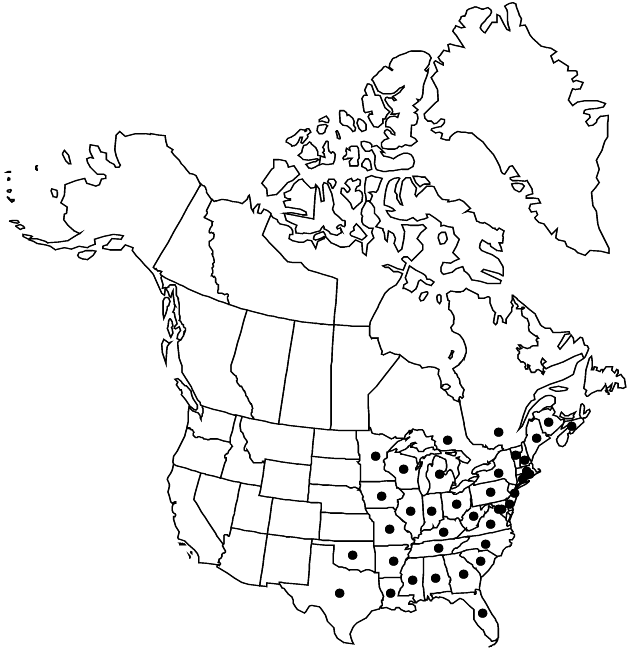Bidens discoidea
Bull. Torrey Bot. Club 20: 281. 1893.
Annuals, (10–)20–60(–180) cm. Leaves: petioles 10–40(–60) mm; blades deltate to lance-ovate overall, 30–80(–100+) × 10–30(–80+) mm, usually 3-foliolate, leaflets petiolulate, lance-ovate to lanceolate, (10–)20–50(–100) × 5–20(–40) mm, bases cuneate, ultimate margins usually serrate, sometimes ciliate, apices acuminate to attenuate, faces glabrous or hirtellous. Heads usually borne singly, sometimes in 2s or 3s. Peduncles 10–20(–50+) mm. Calyculi of (3–)4(–5+) ± appressed, spatulate to linear, seldom foliaceous bractlets or bracts (3–)12–25 mm, margins seldom ciliate, abaxial faces usually glabrous. Involucres ± hemispheric, 4–5(–7) × 4–6(–9) mm. Phyllaries 5–7, oblong to lanceolate, 4–6+ mm. Ray florets 0. Disc florets (10–)15–20+; corollas ± orange, 1.5–2 mm. Cypselae blackish to red-brown or stramineous, ± flattened, linear to narrowly cuneate, outer 3–5 mm, inner 4–6+ mm, margins not distinctly ciliate, apices ± truncate to concave, faces ± tuberculate, antrorsely strigillose; pappi of 2 ± erect, antrorsely barbed or smooth awns (0.2–)1–2.4 mm. 2n = 24.
Phenology: Flowering Aug–Oct(–Nov).
Habitat: Ponds, swamps, other relatively wet sites
Elevation: 10–300 m
Distribution

N.B., N.S., Ont., Que., Ala., Ark., Conn., Del., D.C., Fla., Ga., Ill., Ind., Iowa, Ky., La., Maine, Md., Mass., Mich., Minn., Miss., Mo., N.H., N.J., N.Y., N.C., Ohio, Okla., Pa., R.I., S.C., Tenn., Tex., Vt., Va., W.Va., Wis.
Discussion
Bidens discoidea is not nearly as variable morphologically as the closely related B. vulgata or B. frondosa. It differs from B. frondosa in having smaller heads, cypselae with shorter, antrorsely barbed awns, fewer phyllaries and flowers per head, sparse indument, and leaves with fewer, more acuminate leaflets. Both B. discoidea and B. frondosa differ from B. vulgata in texture of flowers, in heads, and in shapes and surfaces of cypselae (M. L. Roberts 1982, 1983; M. G. Hickler 1999).
Selected References
None.